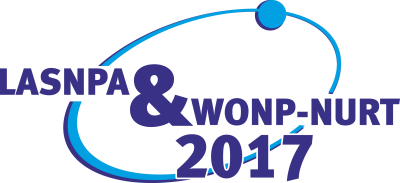Speaker
Description
Nowadays, the use of Aqueous Homogeneous Reactors (AHR) for the production of medical isotopes, mainly 99Mo, is potentially advantageous because of their low cost, small critical mass, inherent passive safety, and simplified fuel handling, processing and purification characteristics. However, it faces some challenges to be successfully deployed for the production of medical isotopes. This paper summarized the computational modeling efforts carried out by our research group in order to solve some of the identified challenges. The studies carried out included the neutronic and thermal-hydraulic modeling of 75 kWth AHR based on the LEU configuration of the ARGUS reactor. In addition are presented and discussed benchmarking exercises that included neutronic and thermal-hydraulic results of two solution reactors, the SUPO and ARGUS reactors. The computational platform utilized for the neutronic and thermal-hydraulics studies included the utilization of the MCNPX version 2.6e and ANSYS CFX 14 computational codes and two computational clusters in Cuba and Brazil, the InSTEC-IRL cluster and UFPE-DEN-GER cluster. The neutronic studies included the determination of parameters such as critical height, 99Mo and others medical isotopes production. Thermal-hydraulics studies were focused on demonstrating that sufficient cooling capacity exists to prevent fuel overheating. Our group studies and the results obtained contribute to demonstrate the feasibility of using AHR for the production of medical isotopes, however additional studies are necessary to confirm these results and contribute to development and demonstration of their technical, safety, and economic viability.
